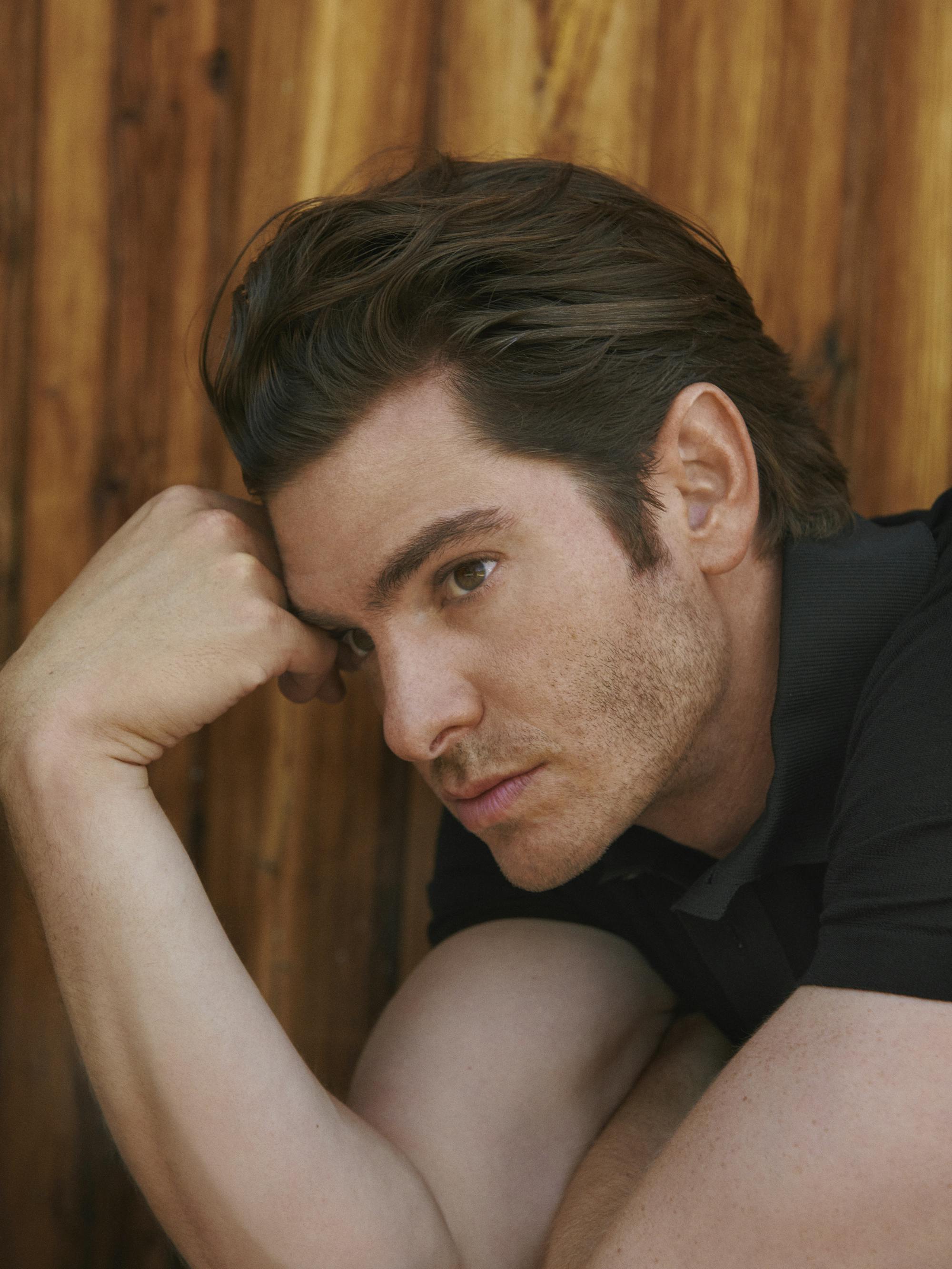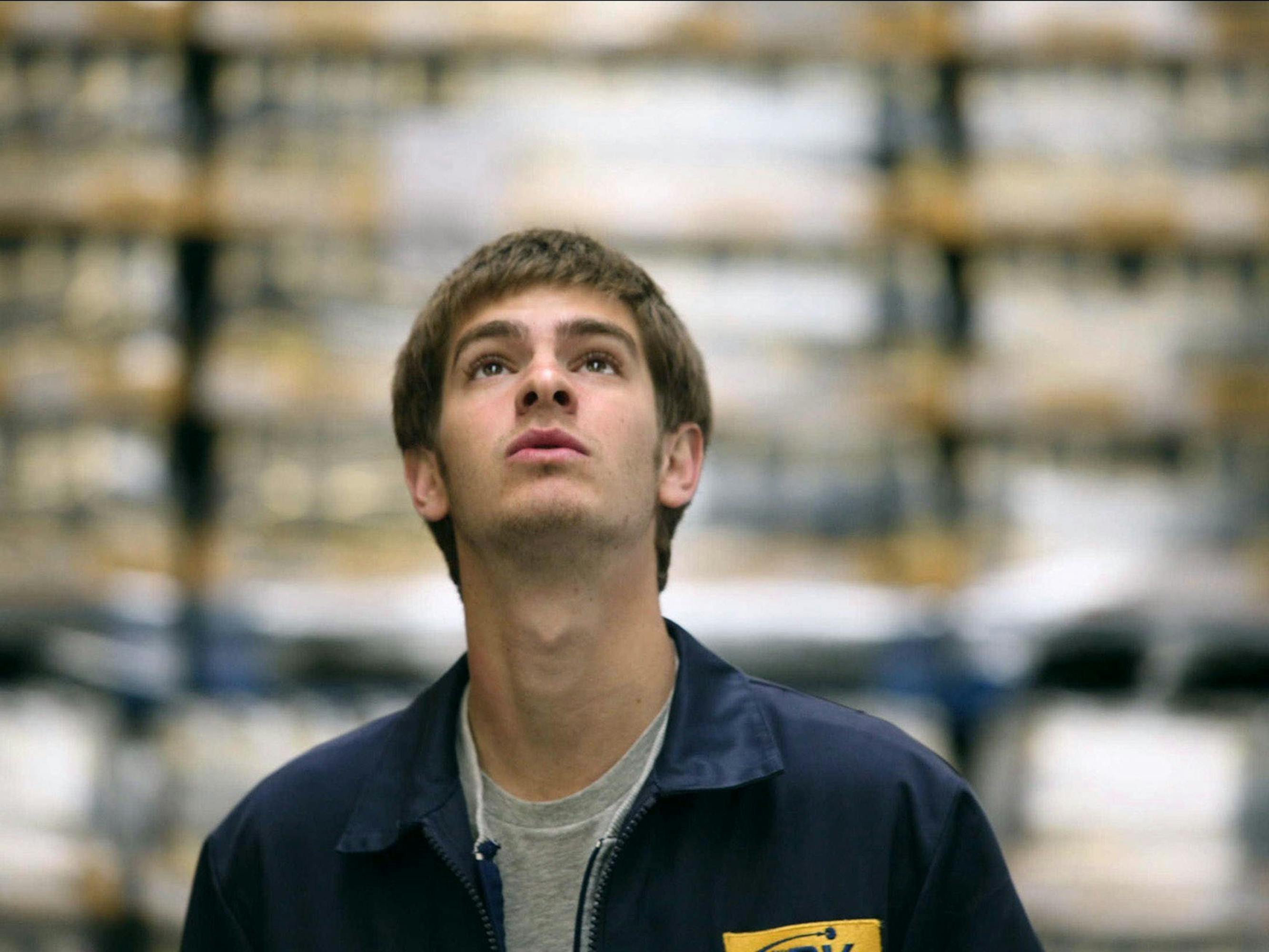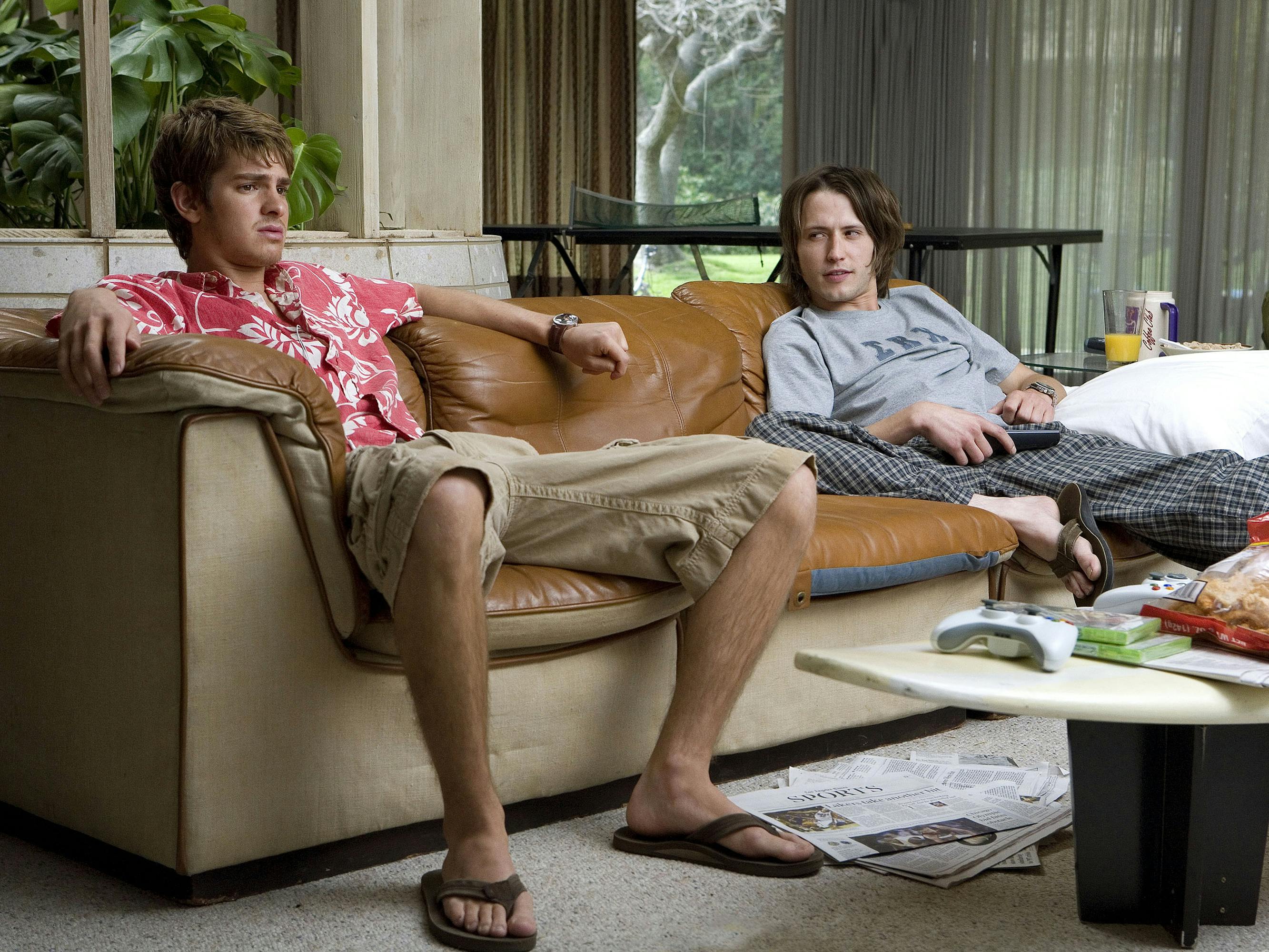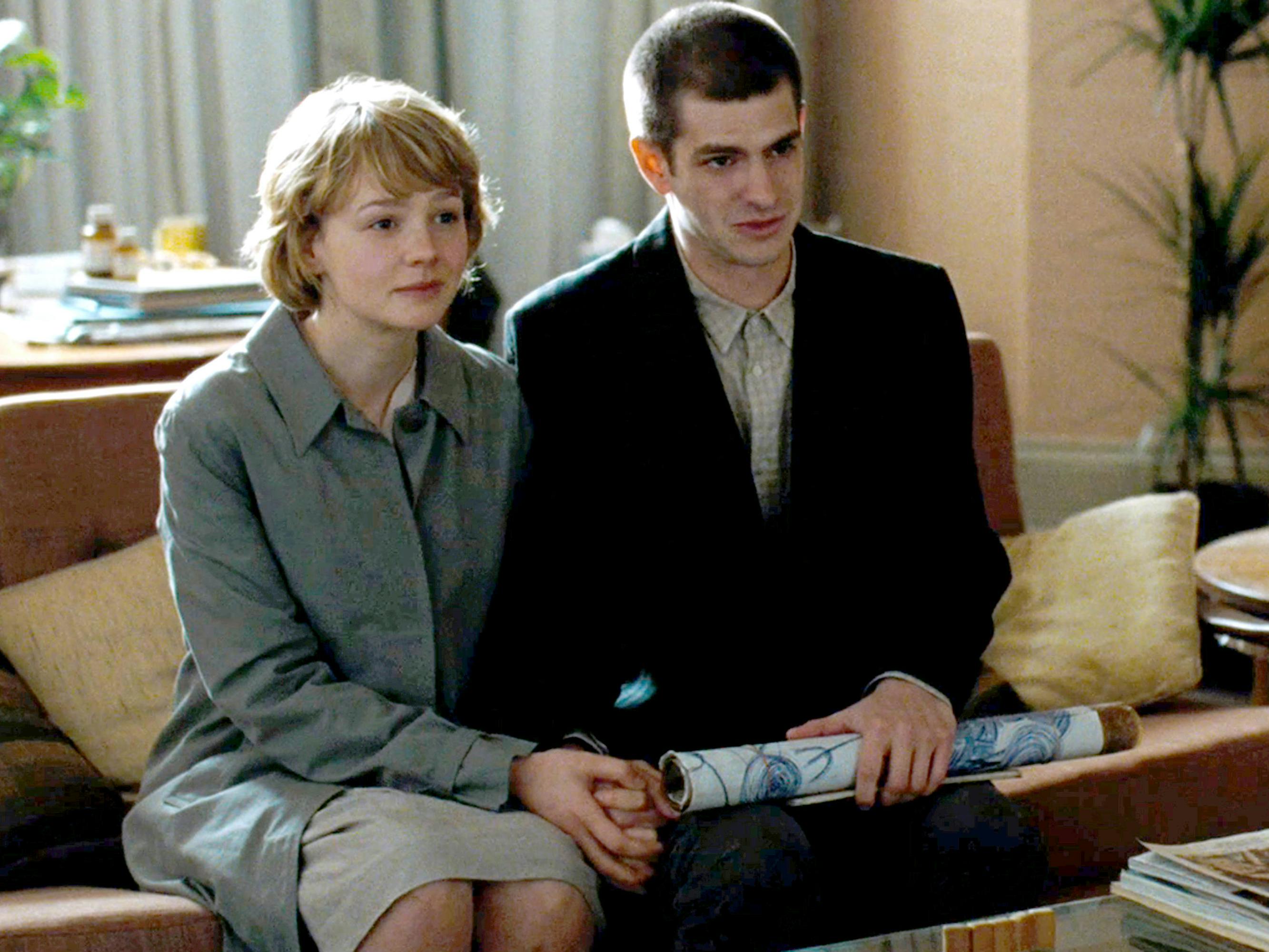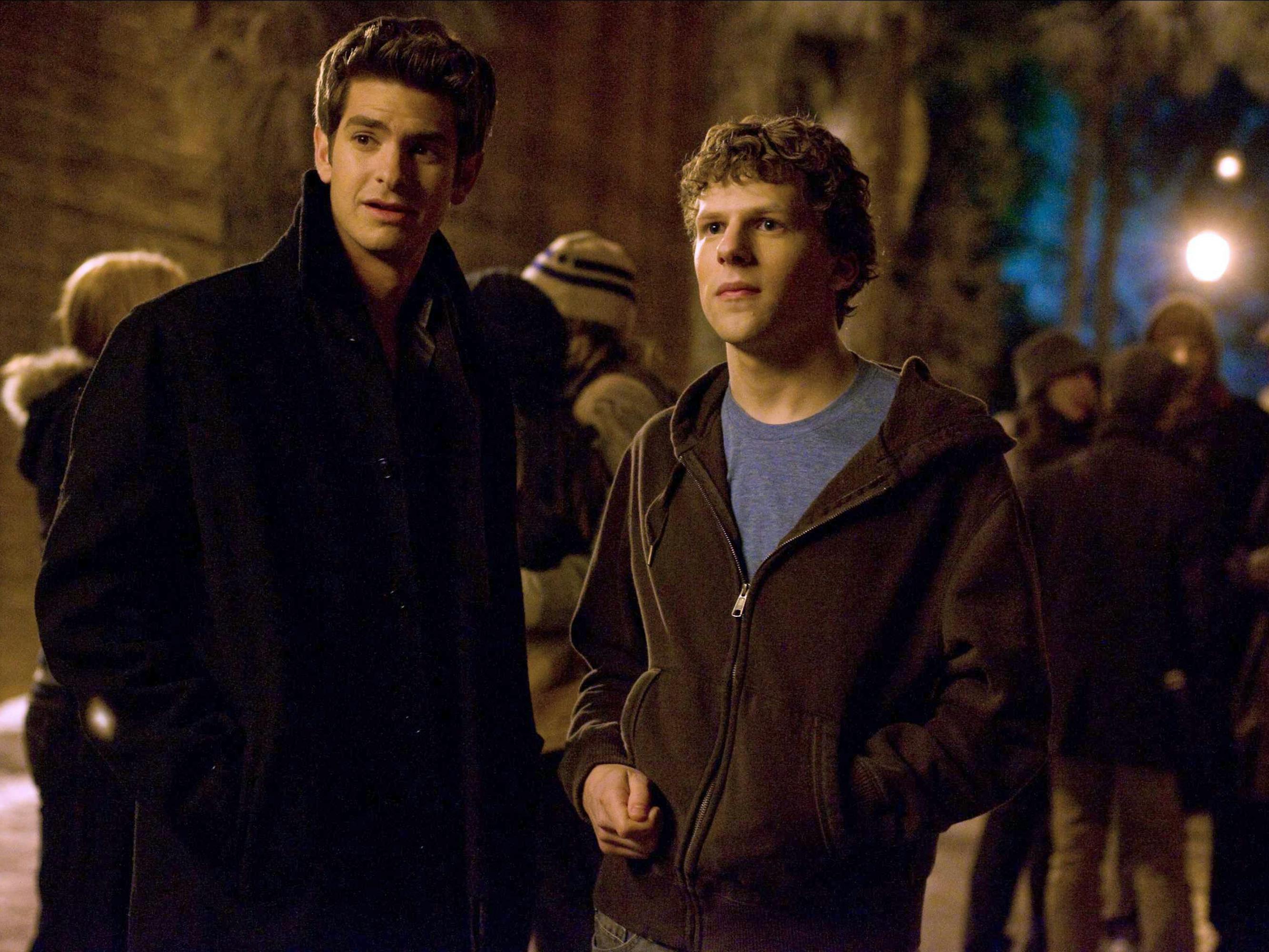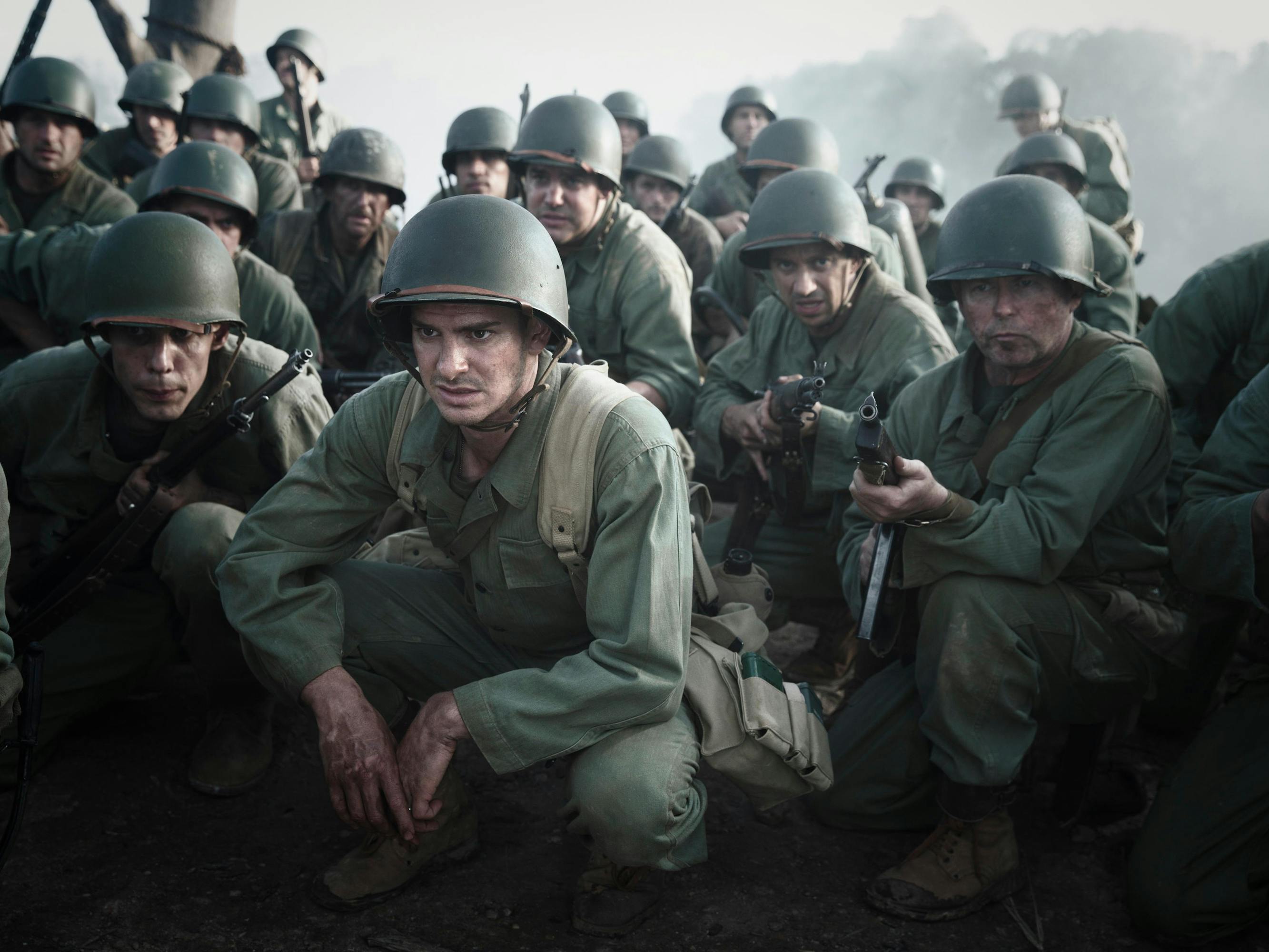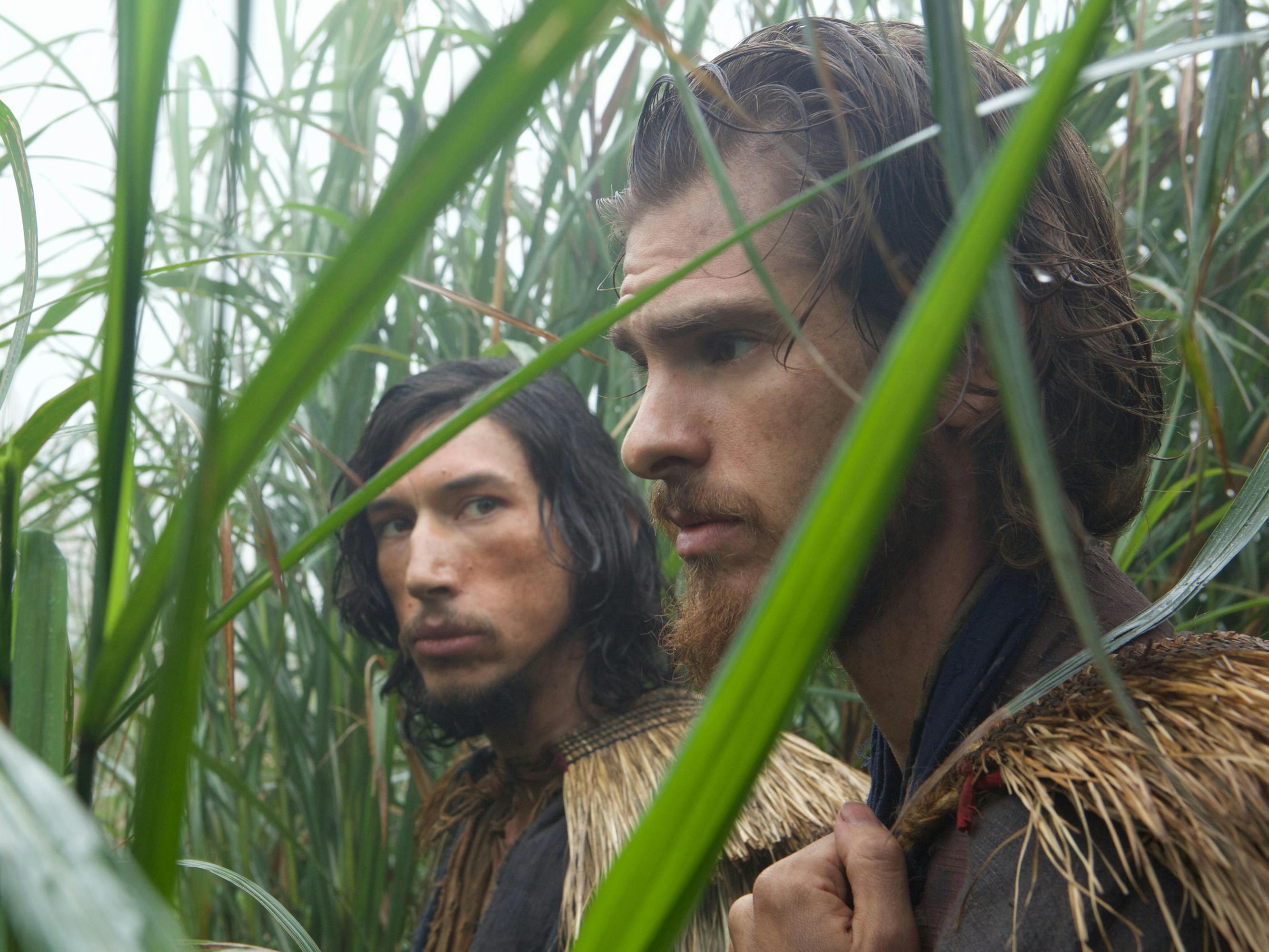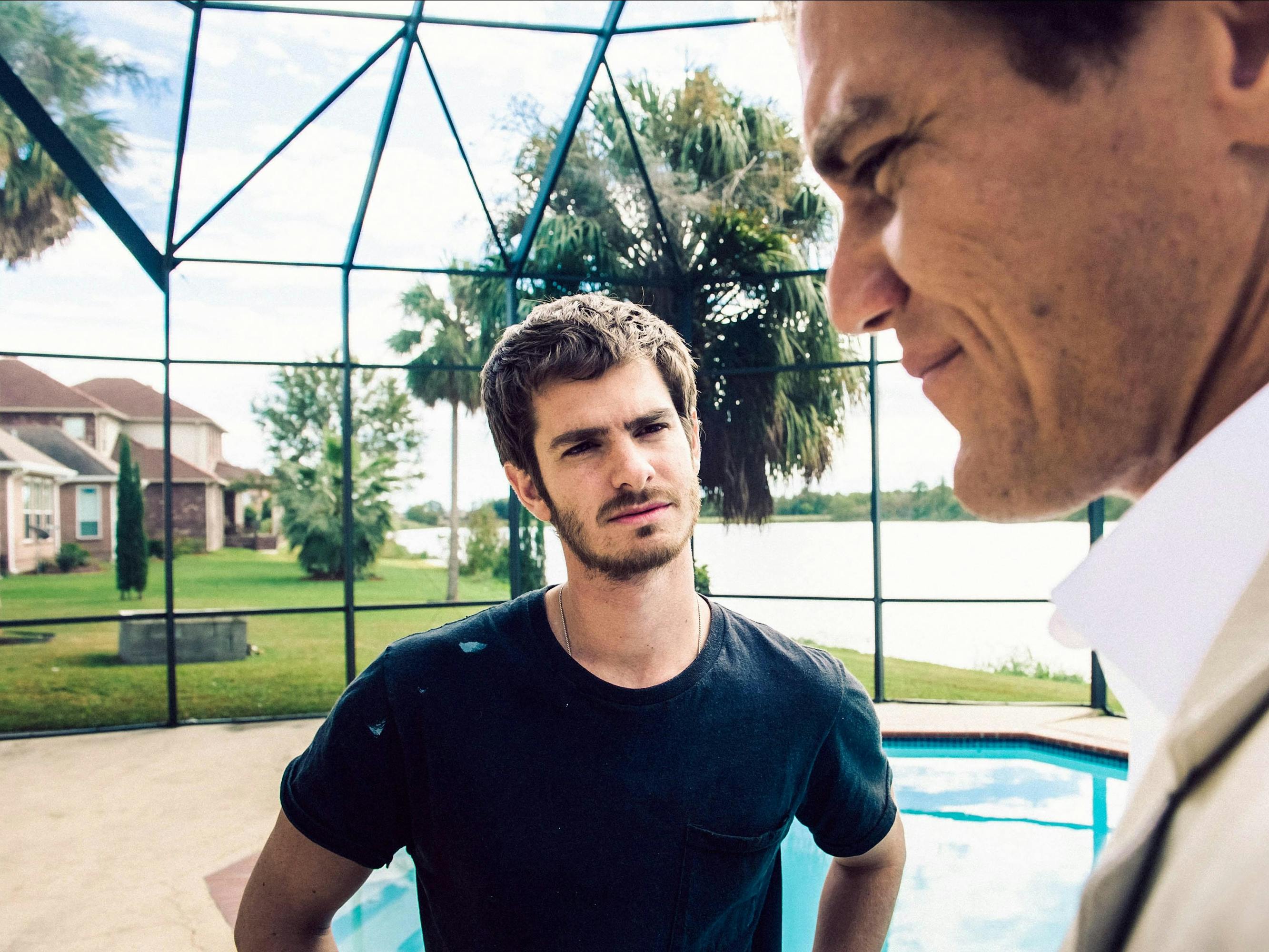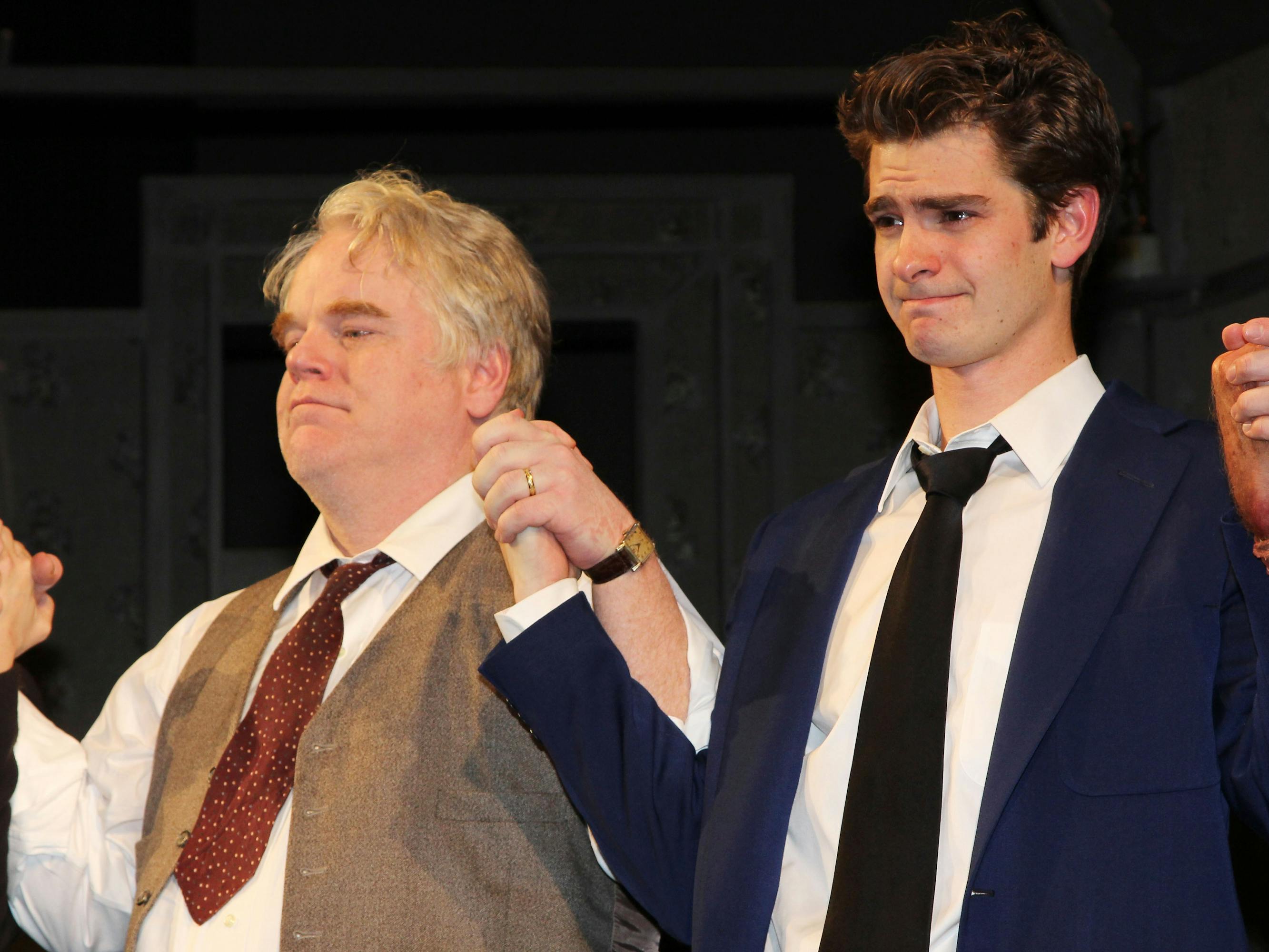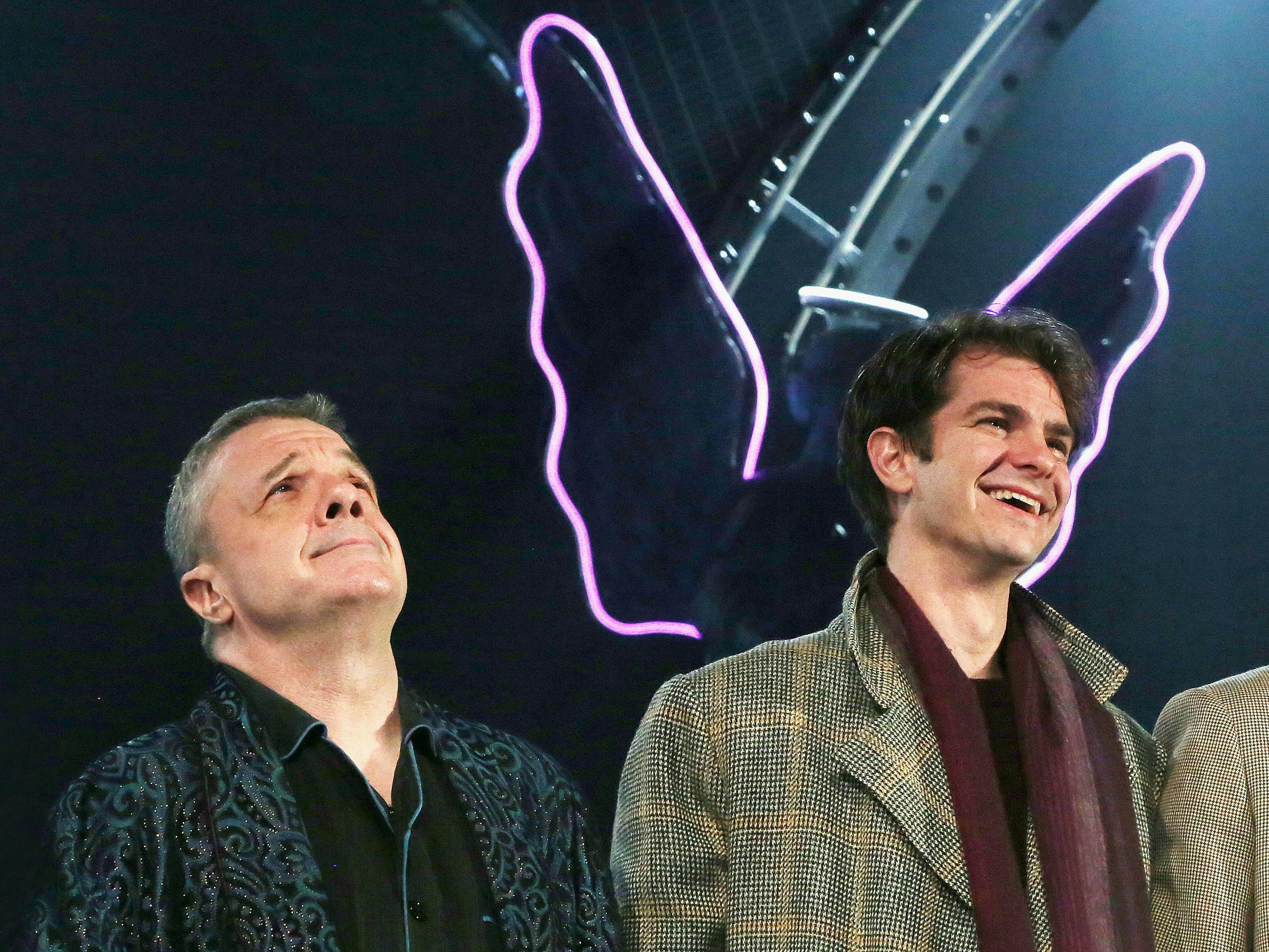Writer and film critic Marya E. Gates considers the range of Andrew Garfield’s film and theater careers, and how his latest role in tick, tick . . . BOOM! combines the two.
In the opening sequence of Lin-Manuel Miranda’s tick, tick . . . BOOM!, we meet composer, lyricist, and playwright Jonathan Larson as portrayed by Andrew Garfield. He’s on a brightly lit stage performing his one-man show, a kind of confessional stand-up. He tells the audience he’s been hearing a ticking lately, like a bomb waiting to explode. Barreling towards his 30th birthday, Larson’s feeling the pressure as an artist who has yet to hit his stride. Garfield’s performance is undeniable and one could argue career defining. However at a closer glance, it is clear how Garfield has led with the same empathy, commitment, and preparation in a range of roles both on stage and onscreen. He brings a kinetic energy to all his performances, but also an instinctive ability to convey human nature, flaws and all.
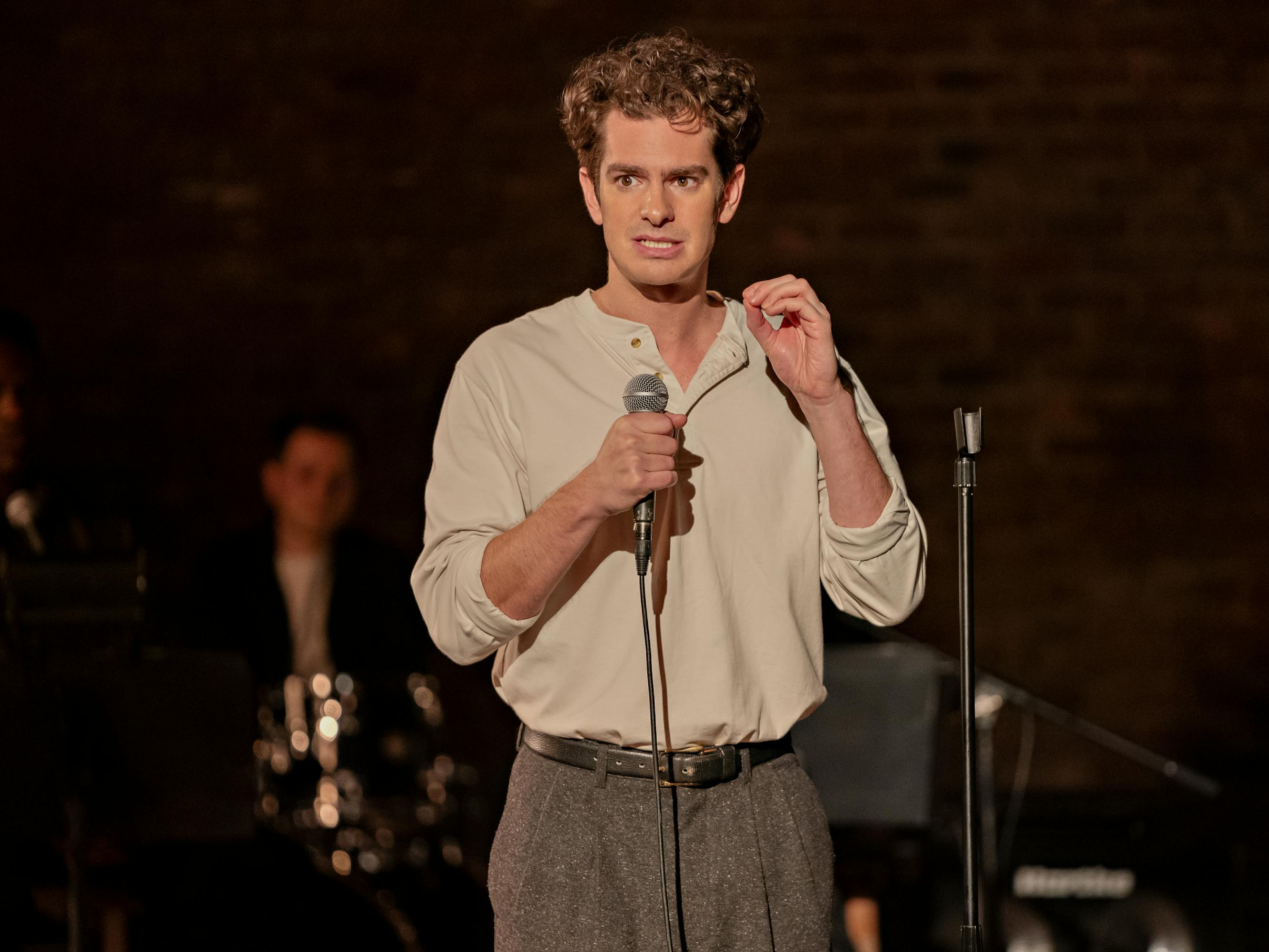
Andrew Garfield
You can trace Garfield’s talent back to his days in youth theater, which led him to the University of London’s Central School of Speech and Drama. After stints at various Starbucks while making the audition rounds, Garfield was cast in his first feature, 2007’s Boy A, which established himas one of Britain’s most promising young actors. Garfield plays a young man released from prison for a crime committed when he was a boy. The internal conflict plays out on Garfield’s face, the way he holds his gaze at times and averts his eyes at others, the intensity behind them always belying the myriad emotions held just below the surface.
That same year he starred opposite Robert Redford in the drama Lions For Lambs. Holding his own against the legendary actor-director, Garfield plays Todd Hayes, a privileged college student embroiled in an intense political tête-à-tête with one of his professors. Although both characters remain seated for much of the film, Garfield’s physicality is apparent, from his wide grin and mischievous eyes, to the way he leans back in chair with his bent leg propped up while being admonished for missing classes. Garfield’s lively energy contrasts well against Redford’s iconic cool as the two go tit for tat, and feels like a prelude to Garfield’s breakout role in The Social Network a few years later.
But first, Garfield tackled his most existential film to date: Never Let Me Go. Playing Tommy, an introspective boarding school student, in the adaptation of Kazuo Ishiguro’s novel, gave Garfield an opportunity to truly showcase his range. The actor matches his transformative physicality with the complex interiority of his character: After Tommy discovers the bleak purpose of his birth, he lets out a scream that wrecks your body and comes straight from the soul. Here we begin to see the deep well from which Garfield continues to draw.
Recommended by Mark Romanek, who directed Never Let Me Go,Garfield initially met David Fincher to discuss the role of Mark Zuckerberg in The Social Network, but Fincher told the L.A. Times he felt Garfield’s “incredible emotional access to his kind of core humanity” would be wasted on that role. Instead Garfield was cast as Zuckerberg’s best friend and Facebook co-founder Eduardo Saverin. It is this friendship, and ultimate betrayal, that acts as the film’s emotional anchor, and for that to work, Saverin’s hurt must feel real. The testimony during arbitration is cut throughout the film, and it’s here we see Garfield’s mastery of emotions percolating just below the surface. Then he lets these emotions burst in the now iconic scene dramatizing Saverin’s ousting from the company. Here, a star was born.
Next, Garfield took a swing at the iconic comic book character Spider-Man in two films: The Amazing Spider-Man and The Amazing Spider-Man 2. Garfield takes a more grounded approach with Spider-Man, unlike any superhero performance we’ve seen before. Garfield said of the role, “it’s a very inspiring, aspirational character that symbolizes goodness — and how difficult it is to be good — but how worth it it is.” In 2021’s Spider-Man: No Way Home, Garfield reunited with the role — and with Tobey Maguire and Tom Holland, the other two legends who have played Spider-Man — in the same suit he wore a decade before.
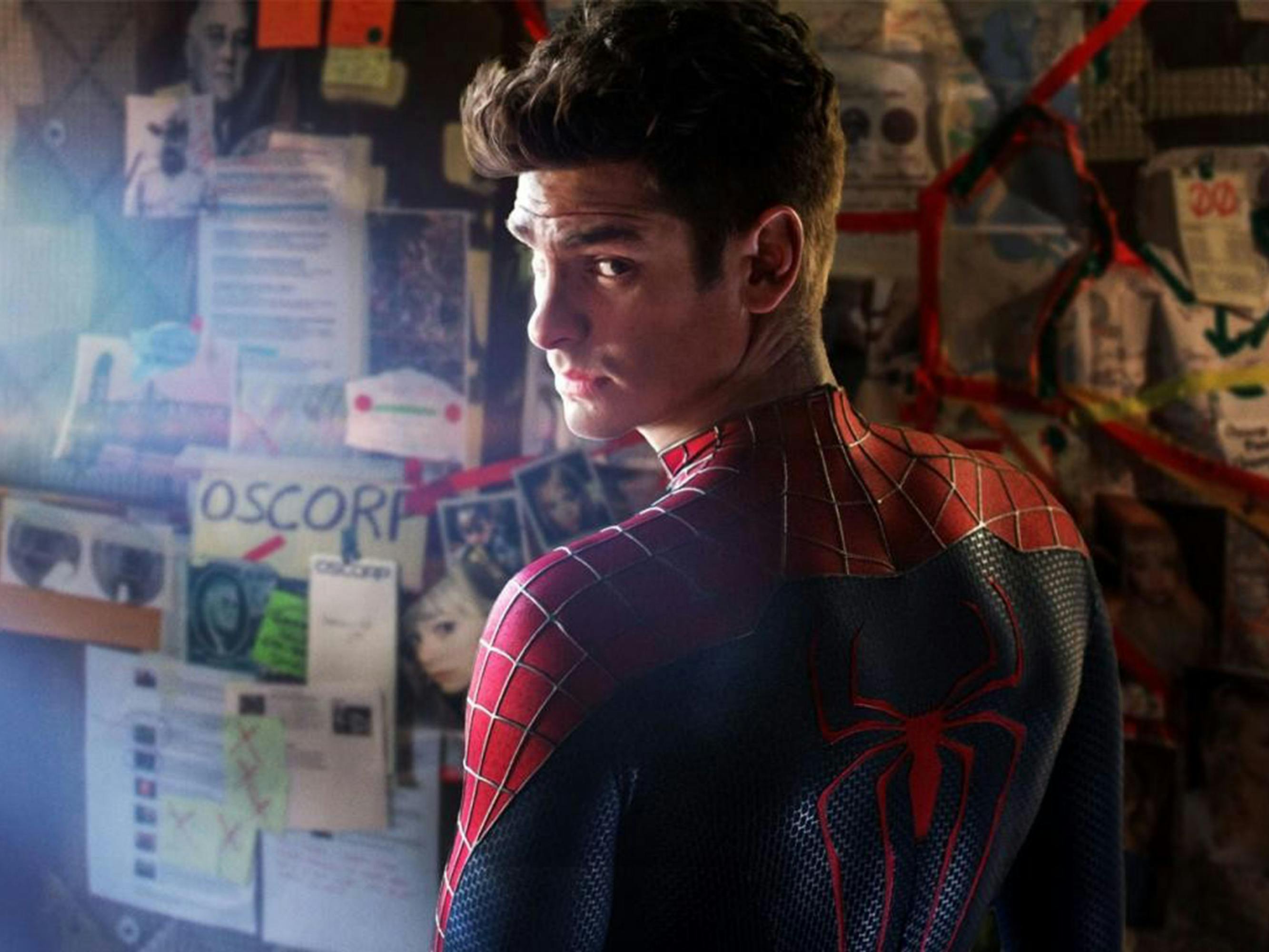
Andrew Garfield inThe Amazing Spider-Man
Not long after, Martin Scorsese cast the actor in Silence, where Garfield plays a Jesuit priest in search of a lost master in feudal Japan. Later that year Garfield earned his first Oscar nomination from Mel Gibson’s Hacksaw Ridge, a biopic of conscientious objector Desmond Doss who saved 75 men during the Battle of Okinawa while serving as a combat medic. Both films were physically demanding, with Garfield literally crawling through mud and trodding through rough wilderness. To prepare for his role as Jesuit priest Rodrigues in Silence,Garfield lost 40 pounds and spent a year immersing himself in the Jesuit lifestyle. To portray real-life hero Doss, Garfield studied the speech patterns of Appalachian residents in order to master its rhythm. On top of the physicality of both roles, the films are about mental fortitude. Both characters withstand physical and psychological torture while maintaining their faith.
Recently Garfield turned his attention back to the stage: In 2012, Garfield received a Tony nomination for his bold performance as Willy Loman’s disenchanted son Biff in the Mike Nichols’s directed revival of Arthur Miller’s Death of a Salesman.He followed this up with a Tony-winning performance as H.I.V.-positive Prior Walter in Marianne Elliott’s revival of Tony Kushner’s Angels In America.A tricky role for any actor, Garfield’s mastery of internal anguish and broad physicality proved a perfect match.
With tick, tick . . . BOOM!, Garfield has parlayed a lifetime of challenging emotional roles both onscreen and on the boards into a funny and human musical performance. Although Garfield had never sung before, he approached the challenge the same way he approaches acting: with his whole body. Becoming Larson, Garfield channels a new level of hypersensitivity. He is an open nerve, a ball of intensity. Garfield captures the joy of feeling this deeply, how it stirs creativity, but also the egoism of it; charisma and kineticism can only go so far if you neglect the feelings of those around you. He excels at balancing this complexity, bringing just the right mixture of gravitas and pathos.
In the show-stopping number “Why” Larson reflects on what his obsession with his career has cost him personally. Alone at the piano in Central Park, Garfield plays and sings almost at a whisper, imbuing the lyrics with a tenderness tinged with regret. Larson has finally faced mortality in a real way, rooted in the importance of personal relationships. He’s faced the ticking clock at last. The power of Garfield’s rendition as his vocals transform into a full-throated belting of the lyrics feels as primal as a scream. With a gentle sigh and a wry smile on his face after the song’s final line, “I’m gonna spend my time this way,” we feel both Larson’s purpose and Garfield’s as well. Garfield is an artist in full control of his instrument, in communion with Larson, at the moment he’s just beginning to have control over his.
